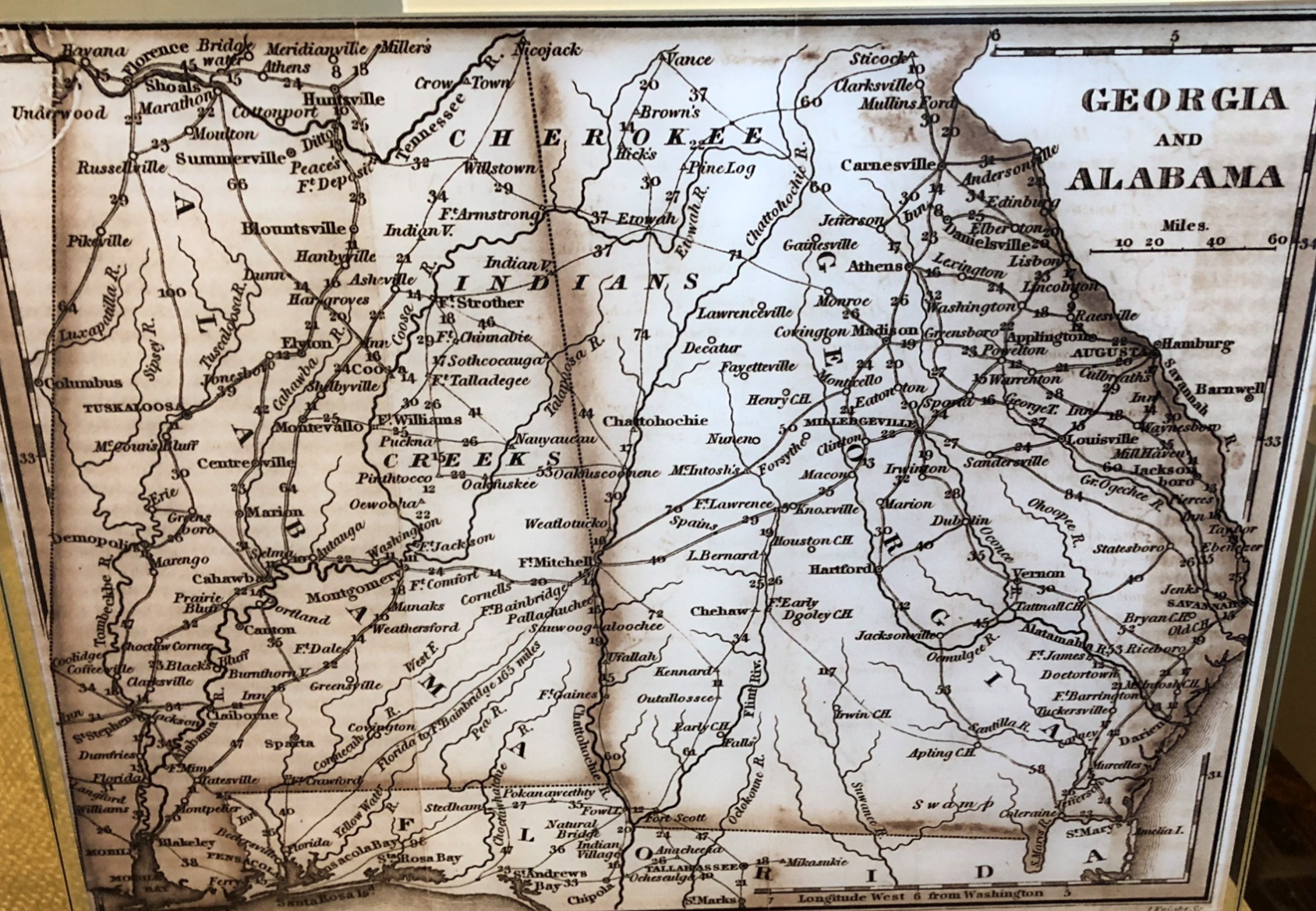Courtesy: Legacy Museum on Main, LaGrange, Georgia
Area History
This area of West Georgia has been inhabited for approximately 12,000 years. Indians brought the earliest man-made change to the lands of West Georgia in distinct settlement periods: The Paleo (10,000 - 8,000 B.C.), Archaic (8,000 - 1,000 B.C.), Woodland (1,000 - 800 B.C.), and Mississippian (800 B.C. - 1,600 A.D.). Mississippian populations included several tribes we know today – the Cherokee, Chickasaw, Seminole, Choctaw and – the last to arrive – the Muscogi or “Creek” Indians. Creek Indians occupied the lands of West Georgia just before the English began to settle coastal Carolina and Georgia in the 1600’s and 1700’s.
The Creek lost control of what would become the northern third of what would become the State of Georgia and retreated south of the Etowah River after a tremendous battle with the Cherokee Indians in the late 1600’s. A later battle forced the Creeks to the Chattahoochee and Flint Rivers and west to the Coosa River in Alabama. At that point, they became separate groups referred to as Upper Creek of Alabama and the Lower Creek who occupied the middle and southern Georgia frontier.
Creek Indians signed the first in a long series of treaties in 1733. After the American Revolution, thousands of settlers from other states moved to Georgia looking for cheap land. As a result, state officials increasingly pressured Creek and Cherokee Indians to give up more and more of their land. After each Indian land cession, Georgia’s legislature would divide the territory into counties. The land was then surveyed and divided into districts and lots.
By 1800, Georgia consisted of 24 counties. An explosion in the number soon followed, with 53 new counties creating during the following 27 years. In 1825, pressured by pioneers anxious to expand, the federal government made a land purchase from the Georgia Lower Creek, despite opposition from Alabama Upper Creek. With this purchase, the United States gained territory in exchange for that given up by Georgia in northern Alabama and Mississippi in 1802.
In 1826, the Lower Creek moved west as surveyors laid out land lots. Large numbers of white settlers arrived following the 1827 land lottery, built houses and established farms and towns. In Dec. 1831, Georgia claimed authority over all Cherokee and Creek lands in Georgia. Angry over the treaty and the encroachment of settlers, the Upper Creek waged the Creek Indian War of 1836, which ended in their defeat and final removal from eastern Alabama.
The settlers who moved into West Georgia were in search of fertile soil, having exhausted lands to the east. For the most part, they came from the Carolina’s, Virginia and East Georgia. With the labor of slaves, large planters, typically people of means, converted much of the land to cotton production, the dominant cash crop. By 1860, West Georgia was among the wealthiest and largest slave-holding areas of Georgia.
[Sources: History of West Georgia Exhibit, LaGrange Georgia; Legacy Museum on Main, LaGrange Georgia; University of Georgia Libraries, Athens, Georgia]
DID YOU KNOW?
Chattahoochee is a combination of two Creek Indian words: “Chat-to,” which means “stone” and “ho-chee,” which means “marked” or “flowered,” so Chattahoochee means place of marked or flowered rocks.
A New Map of Georgia with its Roads and Distances (1849)



